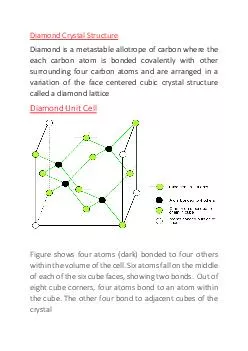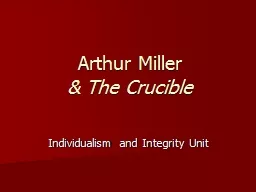PPT-MILLER PLANES Atoms form periodically arranged planes
Author : melanie | Published Date : 2023-10-27
Any set of planes is characterized by 1 their orientation in the crystal hkl Miller indices 2 their d spacing d hkl distance between the planes h k l correspond
Presentation Embed Code
Download Presentation
Download Presentation The PPT/PDF document "MILLER PLANES Atoms form periodically ar..." is the property of its rightful owner. Permission is granted to download and print the materials on this website for personal, non-commercial use only, and to display it on your personal computer provided you do not modify the materials and that you retain all copyright notices contained in the materials. By downloading content from our website, you accept the terms of this agreement.
MILLER PLANES Atoms form periodically arranged planes: Transcript
Download Rules Of Document
"MILLER PLANES Atoms form periodically arranged planes"The content belongs to its owner. You may download and print it for personal use, without modification, and keep all copyright notices. By downloading, you agree to these terms.
Related Documents














